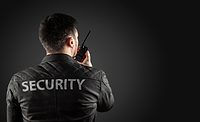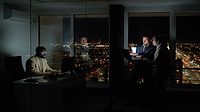Leadership & Management
Servant Leader? Now's the Time to Prove It




No one knows.
We keep hearing that phrase. No one knows who will catch COVID-19 and when. No one knows who will have a runny nose, who will be hospitalized, who will die. No one knows whether the virus is seasonal. No one knows whether the world can ramp up production of ventilators, masks and medicines, or exactly how resilient the supply chain will turn out to be.
At least those were the unfathomables as of the end of March, when this piece was written. Chances are, new unknowns have arisen. In late March, most of the world was watching Italy in horror. We were fretting over mounting case totals and deaths, social distancing, mandatory lockdowns, cabin fever, fastidious hygiene rituals, disruption to our work and businesses, the rollercoaster stock market and scarce toilet paper. What we thought was an already dynamic world, with its 24-hour news cycle, has gone into hyperdrive, with torrents of competing information bombarding us from every angle.
But as security professionals, it is up to us, along with politicians, business leaders, healthcare workers and public safety officers, to truly inhabit the leadership titles we have bestowed on ourselves: servant leader, collaborative leader, empathic leader, agile leader, authentic leader, transformative leader.
True leaders know themselves — what they do well, where they fall short, how others see them, what others want and expect from them. Among several useful tools for helping you master this, is the CliftonStrengths assessment, a tool created by the late Donald Clifton, that ranks 34 attributes from innate to rarely practiced. The 34 Traits that appear in the CliftonStrengths Assessment fall into four categories — Executing, Influencing, Relationship Building and Strategic Thinking — each of which can be drawn upon for leadership. (Each attribute is trademarked by Gallup and has its own specific meaning, but that meaning generally aligns with the lay use of the word.)
A security professional we’ll call “Luke” is a good example of how this works. He told me that he scored high in Strategic Thinking, which doesn’t necessarily correlate with leadership. And he had only one Relationship Building characteristic — which factors heavily in leadership — in his top ten: Positivity. “I was coached to lead with my positivity, not my default analytical traits,” Luke says.
Luke leads by example; he always jumps into the fray. But that’s sometimes at the expense of communicating clearly to and setting expectations of colleagues and partners. In fact, Luke’s Communication trait wallows at 33 out of 34. “I’m naturally contemplative and speak sparingly,” Luke says. But in times of crisis, he activates key CliftonStrengths that also inhabit his top ten Traits: Command, Self-Assurance, Responsibility and Competition to compensate for his typically quiet nature. His approach has calmed staff and inspired loyalty.
In this methodology, cybersecurity practitioners suffer a handicap. Strategic Thinking predominates among cybersecurity professionals, says executive coach Jeff Snyder, who has coached hundreds of security professionals. “But that doesn’t help them lead,” he says. Traits that undergird strong leadership frequently languish at the bottom for cybersecurity professionals: Significance (32), Command (33) and Self-Assurance (34).
But that can be overcome. Snyder offers some leadership advice for security professionals who haven’t performed a self-assessment. First, focus on other people. “People are scared. Everything they are doing now is being driven by fear,” Snyder says. Maybe an essential staff member is afraid to come to the office during this pandemic. A great leader can allay those fears by both listening and minimizing risk. For example, a security director might arrange for security officers to have free on-site parking, so they can avoid public transportation. They might also help establish a special procedure to ensure maximum hygiene, such as restricting office zones to a single person.
But be careful with using data to show that their fear is irrational. That could backfire. People respond to emotion in these times, not logic, Snyder says.
Taking any empathetic action helps, continues Snyder. “Come up with something you can do, something you can share, that counters all the negativity and gloom.” That might include something as simple as encouraging people to use creative backgrounds, such as mountain tops, as their setting in Zoom meetings.
No one knows how or when this crisis will end, how many lives will be taken or ruined. What we do know is that now is the time for security professionals to harness whatever talents they have to lead or move out of the way.
Looking for a reprint of this article?
From high-res PDFs to custom plaques, order your copy today!








